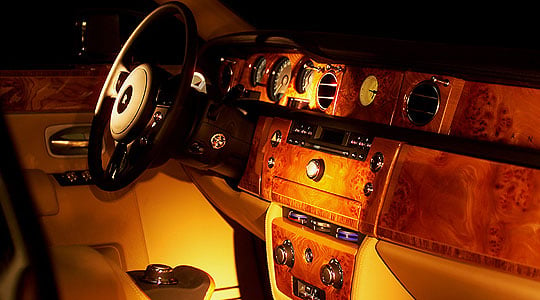
Maybe you remember my "Experiences with the new Rolls-Royce Phantom". Once again I had the great privilege of driving another Phantom, but this time it was a series production car which was to be photographed in a studio. Rolls-Royce Motor Cars gratefully put an extremely elegant car at my disposal, painted in Black Kirsch with hand painted double coachlining in Moccasin along the waistline, and Moccasin interior with woodwork in Crossbanded Elm Cluster.
Much has been written about driving experiences with the fabulous Rolls-Royce Phantom, so I will say but one thing; what a difference to the pre-production car I drove last time. The quietness at top speed - you really can talk with normal voice - and the smoothness of the way this car develops its power is more than impressive. It is unbelievable!
How wonderful to glide through beautiful countryside covered with hoarfrost on a sunny cold winter day, which it was on January 15th. My camera was glowing with anticipation as there could not be a better day for taking pictures outside in the fields.
Naturally I forgot the time and arrived late at the studio where a photographic portrait of the Phantom’s design was planned to convince all remaining people sceptical that the new Phantom is - except for the front - less revolutionary in design than it seems at first glance.
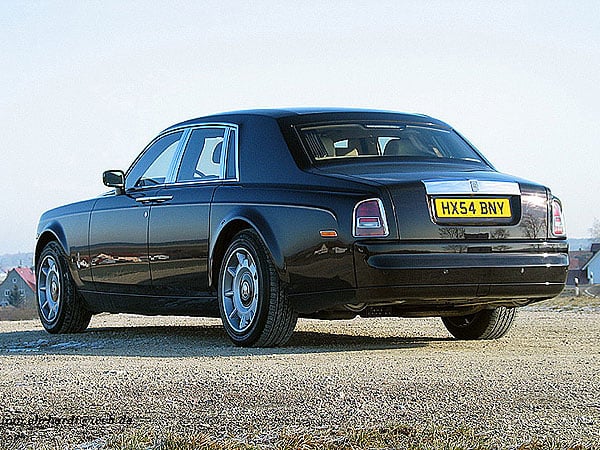
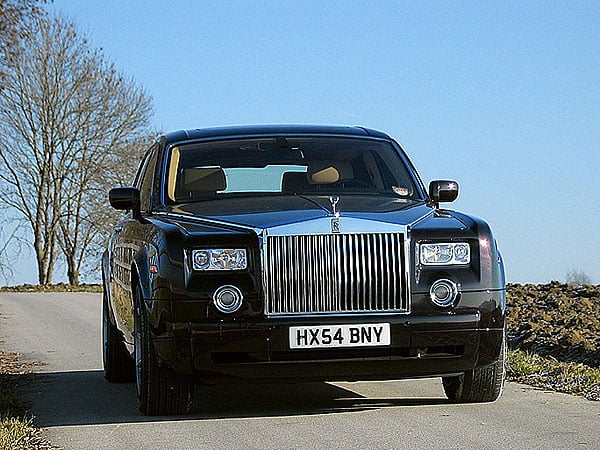
Revolutionary Rolls-Royce designs have always caused very emotional conversations, and the new Rolls-Royce Phantom is no different. So let’s look into the past.
When the Rolls-Royce Phantom III was introduced in 1936, the position of the radiator, which from then on was in front of the front axle, caused difficulties for the designers in creating elegant bodies with the now new and unusual Rolls-Royce proportions. But the most radical innovations were done with the Rolls-Royce Silver Shadow which was launched in 1965. Being used to massive looking Clouds and Phantoms, supporters of the marque were shocked when they saw the new car. It seemed to have been constructed with ignorance of all traditions. It was much smaller and lower than any Rolls-Royce before, the radiator was nearly square, and the body was of unitary construction. Nobody had expected the Silver Shadow to become the best-selling Rolls-Royce ever.
The new Rolls-Royce Phantom once again stands for a new Rolls-Royce generation, and people must get used to its philosophy and design. "Clumsy and too big", "That is no successor for the Seraph", was the reaction of so many people. Fortunately opinions like these are becoming less, and meanwhile even traditionalists understand the new car as a worthy successor to all the big Phantoms of the past.
A member of the German Section of the Rolls-Royce Enthusiasts’ Club, who - by the way - also offers a picnic table suitable for various Rolls-Royce and Bentley models (visit www.picnic-table.de of "designgruppe 4"); is a photo artist and has studied and analysed the design of the new Rolls-Royce Phantom intensely.
Intending to convince the remaining sceptics, his team, "designgruppe 4", produced some comparison photos of the new Rolls-Royce Phantom and a 1962 Rolls-Royce Silver Cloud II long wheelbase Saloon with a special body designed and built by James Young (design no. SCT100, also called "Baby Phantom"). The team successfully worked out the main elements which have always been characteristic to all Rolls-Royce designs and which can also be found on the new Phantom.
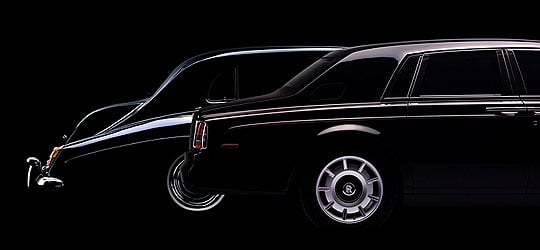
What is first noticed are the sloping roof and waistline, giving lot of dynamic to every Rolls-Royce rear. Also the long overhang of the boot and the strong C-post are typical characteristics of traditional Rolls-Royce design. But there are more details to be found.
The rear is divided into the wings with integrated lights and separated boot that's lines dynamically change into the roof line. This is often found on coachbuilt Silver Clouds as well as on most Phantoms V and VI. Moreover, the edges of the boot lid are led along the boot line to avoid disturbing crossing with the latter. This is also a common feature on most coachbuilt Rolls-Royce cars of the 1950s and 1960s.
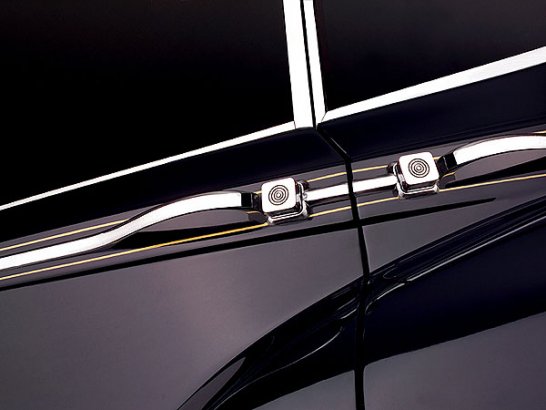
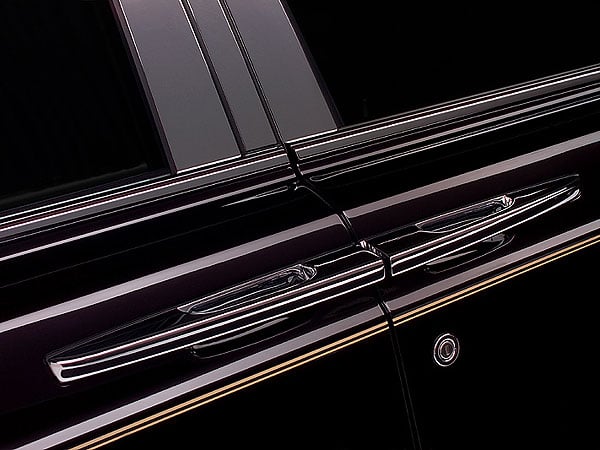
Typical for a classic Rolls-Royce design is that even the door handles are not only a means to an end, but have to emphasize the elegance of the car. In many cases they have even been integrated into the chromium line along the waistline.
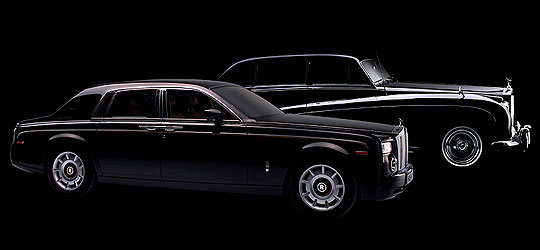
But let the pictures speak for themselves.
Finally, I would like to express my greatest thanks to the sales team of Rolls-Royce Motor Cars who so graciously loaned us one of their rare demonstrators for these pictures, and who also proved to be extremely cooperative in finding the most suitable colour for our purpose
Text: Michael Ehrhardt / [email protected]
Photos: Michael Ehrhardt / Johannes Riedel (designgruppe 4 - studio)
ClassicInside - The Classic Driver Newsletter
Free Subscription!







